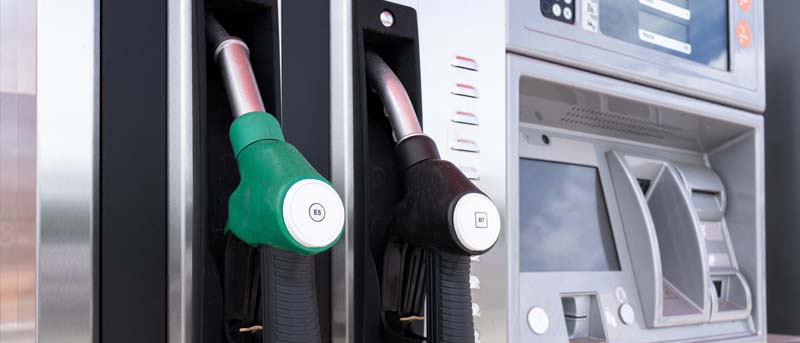Furry Friends Cause Trucking Border Delays At Canadian Border
To prevent reintroduction of rabies carried by dogs into the United States, new CDC regulations require proof of healthy pets at border crossing. Truckers who
We are a team of DOT Compliance and Licensing Professionals helping trucking and transportation companies remain safe, compliant, and profitable.
CNS or Compliance Navigation Specialists is DOT Compliance company that assists trucking and transportation companies remain DOT Compliant. We are part of a network of companies, CNS Companies, specializing in services related to the transportation, manufacturing, construction, service, education and medical industries.

A full-scale DOT Compliance Program managing a long haul carrier’s safety, compliance, licensing and more.
Learn more >>>
A DOT Compliance Program that keeps motor carriers compliant with the 6 Basic DOT Regulations required of all carriers.
Learn more >>>
Our Short-Haul/Construction Program is a full-scale program designed for private carriers that do not haul for-hire.
Learn more >>>
Our most comprehensive DOT Compliance Program, operating as your company’s off-site Safety Director or assisting your current safety personnel.
Learn more >>>
Our Non-CDL Program is a full-scale program managing safety, compliance, licensing and more for moving companies, couriers, landscapers, or any company subject to DOT regulations and does not employ CDL drivers.
Learn more >>>
Our DOT Audit Services cover a number of different types of DOT Audits that new and existing carriers will be subject to.
Our DOT Driver Services help trucking companies and carriers to stay compliant as they grow and hire more drivers.
Our DOT Vehicle Services focus on ensuring your vehicles are compliant with DOT Regulations, which is just as important as your drivers.
Our DOT Services for Special Carriers focus on companies outside of the typical motor carrier, like HAZMAT, Passenger and Bus Carriers.
CNS is part of a group of companies that offer other necessary services for the trucking and transportation industry, such as Commercial Trucking Insurance, CDL Training, Online Training Course, and even Healthcare.
Our DOT Licensing Services will cover you whether you are an existing company or just starting a trucking company. Our DOT Licensing Specialists can help you get up and running and in days with your DOT number, MC Authority, EIN, UCR, IFTA, 2290 HVUT, Fuel Taxes and can even set you up to get your Commercial Driver's License (CDL) with CNS Driver Training Center.
Our DOT Licensing Specialists will help you with every aspect of starting a trucking company. All you need to do is choose a name for your trucking company.
You will need to ensure your DOT Number, MC Authority, Vehicle Registration, etc. is all set up properly when you start your trucking business.
Our Licensing Specialists can help with all aspects of filing and renewing licenses, fuel taxes, etc.
CNS is part of a group of companies that offer other necessary services for the trucking and transportation industry, such as Commercial Trucking Insurance, CDL Training, Online Training Course, and even Healthcare.
To prevent reintroduction of rabies carried by dogs into the United States, new CDC regulations require proof of healthy pets at border crossing. Truckers who
CNS or Compliance Navigation Specialists is DOT Compliance company that assists trucking and transportation companies remain DOT Compliant. We are part of a network of companies, CNS Companies, specializing in services related to the transportation, manufacturing, construction, service, education and medical industries.
CNS Companies is a network of companies specializing in services related to the transportation, manufacturing, construction, service, education and medical industries. Our DOT Compliance division is handled by Compliance Navigation Specialists, CNS Insurance handles Commercial Truck Insurance, CDL training is managed by the CNS Driver Training Center and healthcare is managed by CNS Occupational Medicine.
We are a team of DOT Compliance and Licensing Professionals helping trucking and transportation companies remain safe, compliant, and profitable.
CNS or Compliance Navigation Specialists is DOT Compliance company that assists trucking and transportation companies remain DOT Compliant. We are part of a network of companies, CNS Companies, specializing in services related to the transportation, manufacturing, construction, service, education and medical industries.

A full-scale DOT Compliance Program managing a long haul carrier’s safety, compliance, licensing and more.
Learn more >>>
A DOT Compliance Program that keeps motor carriers compliant with the 6 Basic DOT Regulations required of all carriers.
Learn more >>>
Our Short-Haul/Construction Program is a full-scale program designed for private carriers that do not haul for-hire.
Learn more >>>
Our most comprehensive DOT Compliance Program, operating as your company’s off-site Safety Director or assisting your current safety personnel.
Learn more >>>
Our Non-CDL Program is a full-scale program managing safety, compliance, licensing and more for moving companies, couriers, landscapers, or any company subject to DOT regulations and does not employ CDL drivers.
Learn more >>>
Our DOT Audit Services cover a number of different types of DOT Audits that new and existing carriers will be subject to.
Our DOT Driver Services help trucking companies and carriers to stay compliant as they grow and hire more drivers.
Our DOT Vehicle Services focus on ensuring your vehicles are compliant with DOT Regulations, which is just as important as your drivers.
Our DOT Services for Special Carriers focus on companies outside of the typical motor carrier, like HAZMAT, Passenger and Bus Carriers.
CNS is part of a group of companies that offer other necessary services for the trucking and transportation industry, such as Commercial Trucking Insurance, CDL Training, Online Training Course, and even Healthcare.
Our DOT Licensing Services will cover you whether you are an existing company or just starting a trucking company. Our DOT Licensing Specialists can help you get up and running and in days with your DOT number, MC Authority, EIN, UCR, IFTA, 2290 HVUT, Fuel Taxes and can even set you up to get your Commercial Driver's License (CDL) with CNS Driver Training Center.
Our DOT Licensing Specialists will help you with every aspect of starting a trucking company. All you need to do is choose a name for your trucking company.
You will need to ensure your DOT Number, MC Authority, Vehicle Registration, etc. is all set up properly when you start your trucking business.
Our Licensing Specialists can help with all aspects of filing and renewing licenses, fuel taxes, etc.
CNS is part of a group of companies that offer other necessary services for the trucking and transportation industry, such as Commercial Trucking Insurance, CDL Training, Online Training Course, and even Healthcare.
To prevent reintroduction of rabies carried by dogs into the United States, new CDC regulations require proof of healthy pets at border crossing. Truckers who
CNS or Compliance Navigation Specialists is DOT Compliance company that assists trucking and transportation companies remain DOT Compliant. We are part of a network of companies, CNS Companies, specializing in services related to the transportation, manufacturing, construction, service, education and medical industries.
CNS Companies is a network of companies specializing in services related to the transportation, manufacturing, construction, service, education and medical industries. Our DOT Compliance division is handled by Compliance Navigation Specialists, CNS Insurance handles Commercial Truck Insurance, CDL training is managed by the CNS Driver Training Center and healthcare is managed by CNS Occupational Medicine.

According to the American Trucking Association, drivers who practice fuel-efficient driving techniques use about 35% less fuel than those who do not.
Typically, fuel is the largest operating costs in a trucking company and the average truck today can consume more than 20,000 gallons of fuel a year, costing more than $70,000.
Multiply this by the number of vehicles in a fleet and you can grasp the importance of fuel efficiency for your employer.
Beyond using aerodynamic kits, saving fuel is not that difficult and slight modifications can help you achieve greater efficiency.
The secret of good fuel economy requires overcoming:
Below are proven techniques that drivers have used to improve fuel efficiency. Whatever kinds of loads you haul and wherever you normally travel, these fuel saving techniques will help you reduce the amount of fuel you burn.
Air drag is the result of forces pushing back against the vehicle as it passes through the air and depends on speed, frontal area exposure, and external vehicle shape.
Air resistance is the most significant contributor to vehicle power requirements, especially over the speed of 50 mph.
Minimizing the height of the load will save fuel by reducing the air drag on the vehicle. Most tractor trailers have roof mounts that deflect airflow over the highest point at the front of the trailer load.
For approximately every three feet of frontal exposure of the trailer exposed to airflow, the fuel consumption will decrease by 0.1 mpg.
In addition to overhead deflectors, we see devices that seal the gap between the tractor and trailer, sealing the trailer underbody, and trailers adding a boat tail. These aerodynamic devices can reduce the horsepower required to move the truck by as much as 35 horsepower.
Fleets looking to streamline their vehicles will need to go through some trial and error to find a good fit. Once the aerodynamic devices have been installed, follow recommended upkeep and inspections on these devices.
As the second most significant contributor to vehicle power and fuel consumption, rolling resistance is the energy required to maximize the movement of tires on a roadway.
The factors that influence rolling resistance include:
It has been demonstrated that checking tire pressure regularly and keeping an eye on tread wear can achieve up to 0.5 mpg as losing 10 pounds of tire pressure can lead to a 1% decline in fuel economy.
Speeds above 50 mph lead to more friction on the roads, higher tire temperatures, and reduced fuel economy. This leads to a decrease of 0.1 mpg for every mile per hour over 55 mph.
Overcoming or utilizing gravity to your advantage is most important during steep grades. When moving a loaded vehicle up a grade, the only variable you can influence is speed.
To improve fuel efficiency–in rolling terrain–use a light throttle and allow momentum to carry the vehicle over short grades.
In hilly and mountainous terrain, use the engine’s entire operating range before gearing down, where possible.
When cresting steep grades, use gravity to bring the vehicle back to the desired cruising speed.
Also, the type of cargo you haul and how heavy it is significantly affects fuel consumption. If the cargo is distributed correctly, the engine works less. So, do not overload any axles because for every 1,000 pound increase in vehicle weight, your fuel economy decreases by 0.5%.
You can improve fuel economy when you balance the load between your drives and trailer tandems with slightly more on your drive axles.
No matter how many years you have been driving, it is easy for drivers to develop inefficient driving habits, which includes:
It is the driver’s goal to arrive on time while incurring the least expense. Below are five ways to decrease wasteful driving habits.
Number one: Warming up the engine
The most underutilized fuel savings device on the truck is the engine. When your engine is not operating at peak efficiency, there will be fuel loss.
To optimize engine economy, you need to:
Coolant and lube oil operating temperatures can contribute greatly to fuel efficiency. Low coolant temperatures indicate the engine is too cold for efficient combustion. Lube oil below ideal temperature is more viscous and harder to pump. Oil above ideal temperature is too thin to lubricate properly.
An engine that is starved for air or unable to expel exhaust will lack power and waste fuel. Excessive fuel line restrictions will also reduce your miles per gallon.
When it comes to idling, today’s engine oils do not need you to warm up and idle your engine. Idling does not maintain the correct engine temperature and will dump oil into the exhaust manifold and turbo charger where it gets wasted.
In fact, idling can be harder on the engine than shutting it off or starting it up and can cost $3,500 or more in fuel per year.
As soon as the engine is running smoothly, you can head out slowly at first as the higher RPMs, the more fuel you will use.
Line-haul trucks not equipped with auxiliary power units might idle about 20-40% of the time the engine is running. If your truck does not have idle-reduction equipment:
Speed & Following Distance
Traffic conditions have a significant effect on fuel use. Every time you drop down a gear, fuel consumption increases. The more you brake, speed, or accelerate, the more fuel will be used.
When possible, using cruise control will help you optimize the amount of fuel needed for any given situation, thus improving fuel efficiency.
Be sure to allow at least 6 seconds between you and the vehicle in front of you, when possible. This will help you reduce the amount of times you need to fluctuate your speed.
Topping off your fuel tank
Over filling your fuel tank can overwhelm the evaporative system and could cause leaks due to excessive pressure in the system.
Since fuel expands when it is hot, the only way for the fuel to escape is through the breaker vent.
So, prevent topping off your fuel to increase fuel efficiency.
Turning
As you might have seen from the Mythbusters television show or UPS delivery statistics, avoiding left-hand turns conserves fuel, saves time, and avoids collisions.
UPS showed they could save over three million gallons of fuel with this technique.
When mapping out your last-miles off the highway, looks for ways to reduce left-hand turns.
Create a Driver Scorecard from ELD data
ELDs gather millions of data points that include dates, time, longitude, latitude, engine power status, odometer, engine faults, critical events data, harsh braking, hard turning, hard acceleration, HOS violations, idling, speeding, and more.
Many ELD providers, including our partner Pedigree Technologies, have created driver and safety scorecards that are easy to set-up, manage, and pull reports.
For example, Pedigree driver and safety scorecards include stats, such as:
These scorecards are point-based starting at 100 points and any selected stat can remove a certain amount of points based on the severity of the stat you are including in the scorecard. They can be customized further by adding a timeframe duration of the stat or distance traveled.
For example, a driver can lose 15 points for every time a hard-braking event happens every 100 miles.
Scorecard reporting can be customized by timeframe (the previous 7 days or month), selected vehicle or vehicle types (semi/long-haul trucks, medium-sized trucks, construction vehicles, etc), and more.
The Pedigree ELD reporting tool also shows if the driver has performed better or worse over the previous week or month.
Does your ELD provider offer similar reporting tools? If not, learn more about Pedigree Technologies.
At CNS, our DOT Compliance Programs focus on Proactive Safety Management (PSM), a mindset that will ensure your fleet’s safety and compliance is always in order and ahead of the FMCSA.
Our PSM Motor Carrier Program includes:

ATRI’s Research Advisory Committee (RAC) selected a diverse set of research priorities designed to address some of the industry’s most critical issues including workforce development,

Everyone knows that within the first 12 months of operating as a property carrier within interstate commerce, or 120 days as a passenger carrier, each

Distracted driving is a major issue among all types of drivers but is an especially important concern for commercial motor vehicle drivers as it can

Driving in road construction areas can be among the most dangerous type of driving you will encounter. Spring means warmer weather is here and construction
Our DOT Compliance Programs ensure it is your top priority and keeps your business running.
Receive the latest transportation and trucking industry information about FMCSA and DOT Audits, Regulations, etc.

ATRI’s Research Advisory Committee (RAC) selected a diverse set of research priorities designed to address some of the industry’s most critical issues including workforce development,

Everyone knows that within the first 12 months of operating as a property carrier within interstate commerce, or 120 days as a passenger carrier, each

Distracted driving is a major issue among all types of drivers but is an especially important concern for commercial motor vehicle drivers as it can
Join our monthly newsletter and stay up-to-date on trucking industry news and receive important compliance and licensing tips.
Join our monthly newsletter and stay up-to-date on trucking industry news and receive important compliance and licensing tips.